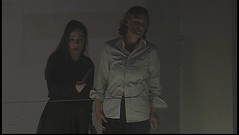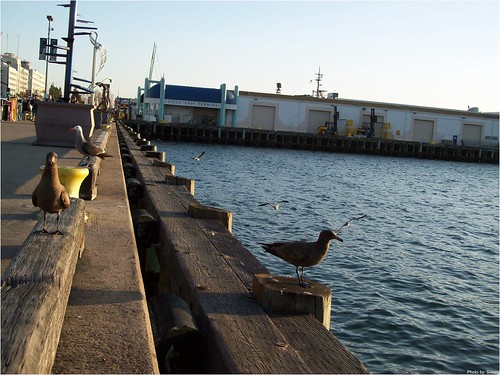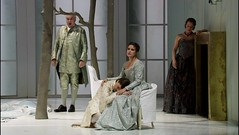'September' is usually performed along with 3 other songs the German composer Richard Strauss wrote toward the end of his life in 1948. The (posthumous) grouping is known to us lovers of classical singing as 'Vier letzte Lieder' (Four Last Songs); Frühling (Spring), September, Beim Schlafengehen (Going to Sleep), and Im Abendrot (Evening).
I'm not a singer, so I'm allowed to love Strauss' music more (this thing is a bear to sing!). He had a magical way of setting a musical scene in a very cinematographic manner using his large orchestra. There are layers and layers of melodic textures that let you hear and see both the details and the big picture at the same time. A whole lot of instruments are playing, but none so loudly - enabling the musical portrait to be richly textured without becoming dense (a la Wagner).
'September' is set in D major. Listen to how the various strings and woodwinds create the pulsing resonance that puts you right in a Bavarian alpine garden on a misty day at the border of summer and fall. We zoom in on the crest of the violins, over the deep blue lake as the fluttering piccolo accentuates the waving field of flowers and its butterflies - swaying their delight in the coming surge of cool air. It is raining ever so gently (in waves of strummed harps) though the sun isn't yet totally absent (do you hear its ray breaking through the clouds with those two trumpets?). The instrumental colors swirl into an acoustic wave from which the soaring soprano voice launches itself...
"Der Garten trauert,........................ The garden mourns,
kühl sinkt in die Blumen der Regen... as cold rain sinks into its flowers.
Der Sommer schauert...................... Summer shudders,
still seinem Ende entgegen................ quietly awaiting its ending.
Golden tropft Blatt um Blatt............... Golden leaves fall; one by one
nieder vom hohen Akazienbaum.......... from the tall acacia tree
Sommer lächelt erstaunt und matt...... Smiles summer, feeble and stunned
In den sterbenden Gartentraum.......... at its fading garden dream.
Lange noch bei den Rosen............... For a while yet it tarries by the roses
bleibt er stehn, sehnt sich nach Ruh.... as it is drawn to its repose.
Langsam tut er................................ Slowly it closes
die müdgeword'nen Augen zu.............. its weary eyes."
- (Hermann Hesse)
Have you ever sung a more descriptive lullaby to summer? So effortlessly persuade its retirement (listen to that sigh it lets out along with its 'feeble smile'!)? Putting it gently to sleep at the soothing tones of the French horns while fading into the peaceful shade of metabolism-slowing gray of the new season? ... And what sweet repose has summer gone off to but to bless Morpheus with its shining acoustic memory of the passing garden. That Richard Strauss was a genius when it comes to orchestration!
 Open another tab and read this welcoming speech by Dr. Karl Paulnack to the Freshman class at the Boston Conservatory, then ponder on the question a bit.
Open another tab and read this welcoming speech by Dr. Karl Paulnack to the Freshman class at the Boston Conservatory, then ponder on the question a bit.














